Creating AI Agents for Service Management (Webinar - UK Session)
In this webinar, the team at Servicely explore AI agents for service management. What are AI agents? What does an agentic framework look like? What are some tasks that AI agents can complete in service management? And how can we create AI agents in a service management platform?
Video Transcript
Hello everyone, welcome. Thanks very much for giving us some of your time this morning or this afternoon, wherever you're based in Europe. It's great to have you. To introduce your presenters today, if you haven't met us, hello. It's great to meet you. For those that have met us, hello again. My name is Jack. I head up sales for Europe, the Middle East, and Africa at Servicely. I have a very modest task today, given this is a technical preview where I will welcome you all. I'll run through the agenda very quickly and then I'll pass over to the star of our show and resident wizard, Yen Telstrap, who's going to be talking to you about all things Agentic AI. If you know Servicely, we don't like to just keep it fluff and the art of the possible. We've got some really cool live examples for you as well today.
So, just to kick off with the agenda, we felt it would be remiss of us not to at least start with five or so minutes on the million-dollar question of what is agentic AI. It's very difficult to keep track of, right? AI is the buzzword of the decade. First, it was predictive with machine learning, pattern matching. Then, suddenly we're on to generative AI, and then before we've even got the hang of Chat GPT and things like that, we're on to agentic AI. We will cover what are AI agents and specifically how do they apply to IT service management in this context. Like I said, we're not just going to do fluff. We're going to show some real examples. Then we'll show some introductory examples of how you can use Agentic AI to retrieve information, to summarize information, and then start to do tasks for us, whether that's in a platform like Servicely or in other platforms. Finally, we'll move on to kind of what comes next. What's the nirvana, right? It's how can we use agentic AI to create assistance. Okay. So, how can this become self-sufficient, as it were, and really empower agents to do more using AI?
Before I hand it over to Yens, we'll do a bit of housekeeping. Of course, much of what you see today will be in the platform very soon in our upcoming August-September release. However, please take everything with a bit of a pinch of salt. This is a technical preview. Things are subject to change. By nature of this being a tech preview, we're going to dive straight into the technology and the positioning. If there are questions on who are we at Servicely, what do we do, please, we're more than happy to have a conversation after this and share more about who we're working with, the sort of outcomes that they're achieving, and so on. Without further ado, I'll pass you over to Yens. Thank you very much. Can you hear me? All right. Just checking before I start talking. Yeah. Excellent.
So, AI agents and agentic AI, what does that mean and what type of impact would that have on enterprise and IT service management? Well, that's kind of what we just want to touch on just before we go on to showing you the real stuff. Agentic AI and service management from our perspective is very much about being proactive, right? Understanding the data that we have in the system, understanding patterns, anticipating what's happening next, and really doing that in a dynamic context right as the IT landscape is constantly changing. What we want to make sure here is that we continuously learn from that change and really start to improve and independently start breaking down the individual tasks that need to be carried out as a result of that change. So really, that's what we're trying to show you today. But just to give you some kind of background in terms of what happens in a platform like Servicely when we talk about agentic AI and what are the different terminology aspects that we need to understand as well, we'll just have a quick look at the agentic stack. What you'll see, and this will become evident as soon as I start sharing my browser, there is a part of this which is all about having a conversation with the system, right? The UI will interact with what we call assistants which kind of act as a middle manager. So, an assistant would have the capability of identifying what are the agents that need to deal with a particular request by the conversational interface. Then those agents will be activated to start doing stuff, and the agents will benefit from a pool of tools. Basically, stuff that can happen inside the platform or outside the platform to go and do stuff.
The way this would work from an ITSM context is basically like what you'll be seeing on the slide here. You'll have a user that would interact with SOFI. SOFI would interact with, say an IT assistant. Now, the great thing about the platform is you can have multiple types of assistants that can do all sorts of stuff for you. You'll see that as soon as we start engaging with the UI, but an assistant can then have and direct basically multiple different types of agents, right? So, an incident agent, reporting agent, a Q agent, and all of these would have access to a set of tools that they can then initiate to basically go and do stuff for us.
If we look at this from an incident context, the set of tools that an incident agent would then be able to execute whenever directed to by the IT assistant would be seen. If we were talking about reporting, that would be a different set of tools. As you can imagine, once we go to the Q agent again, there will be a different set of tools that that particular agent can then use. The key thing here is that the layered model enables us to add governance to what happens from an automation perspective so that we can control who can do what based on what type of job we need to be done and, of course, all of that relating back to the user at the end of the day. That's kind of the agentic stack that services the purpose of the platform really.
What we want to do next here is basically show you what this looks like. As Jack alluded to, this is a technical preview. So, we are looking to release some of this stuff in one of the upcoming releases. The timeframe is pretty much the end of August, beginning of September. At the end of the day, we'll show you a little bit about how you can leverage the platform to do more for you. With all that said, I'll just stop sharing and then come over here and I'll share my screen again shortly. So Jack, can you please confirm that you see a browser? Yeah, we can see it. Excellent.
What you're looking at here is the SOFI UI. You can see we're in a service instance. I'm just going to make it a little bigger here. What you'll see is we've got that interface here where we can come in and query the system, right? Let's start out doing some basic information querying, such as who is Sam Herring's manager, and what the system will do, and you'll see that shortly, is start executing some agents and tools. So essentially we're looking up a username. We can see here that Sam's manager is Dion. We can see that there are various utilities being executed. We can take this a bit further by asking for the email address and also the phone number. I'm just going to punch in, please give me the phone number as well here, and the system will go ahead and look that up for us. You can see we've got an assistant here that is being initiated as well. This is being dealt with by an organizational structure assistant that then triggers user data agents and which have some tools, essentially the get user tools.
What we want to do next is start a new query and add a little more action, right? In this case, I have an expense claim, and this is to be submitted for the engineering team, and who would approve. What we're doing here is essentially initiating a new request. So we are querying the system. We can see that Dion is the manager for this particular request. We could take this even further, right? Dion would need to approve, so we would also want to understand if there is a catalog item for this. What the system would then do is trigger, via the agent, the ability to look for a particular catalog item. In this case, we can see there is a reimbursement request catalog item available, which I could then click and go ahead and submit my request.
That's the basic interaction with the system. Here we've gone looking for information and potential stuff to help us submit requests towards the organization or delivery organization from a self-service perspective. What we'll do next is add a little more flavor to this. We'll come in here and start doing some basic fulfillment tasks, right? What I can do is come in here and ask a simple question such as I'm a service desk agent. I'd ask something like how much work do I have at the minute, and the system will start investigating that for me. You can see we are looking at what is that potential work. We also have the agent workload assistant being triggered by this. What I could do next is ask for help to prioritize this work, and the system will take that context and start analyzing this stuff for me, basically saying this is the amount of work that I have and it will start prioritizing. We see that it's popping up a few items for me to go ahead and do. I'll just copy that incident number we see here at the top and say can you leave a client node or client journal update on that incident, letting the user know we are working on the ticket and will revert. The system will take my context here and propose an action for us. Then I could say we'd like to put this onto that particular record. Again, another way of starting to interact with the system through the prompting as a service desk agent.
We can make that more actionable. I'm going to create another task. I just need to make sure that I go toward the agent workload assistant. I'll ask the system to help me create a new incident. The system will come back and ask me for a short description. For brevity, I'll quickly copy in a short description. The system will pick up that conversational lingo and then ask me who the requester is and what the impact is. I'd go, I am the requester, impact and urgency low. The system will then pick that up and say now we are creating that particular record. Even though it couldn't find me, I am admin.
Now, having created that particular incident record, we can ask the system to go ahead and add some subtasks as well. In this case, we can say we've done some initial investigation here, we need to do more. For that particular incident, we will now create a set of tasks that would then be related to that incident, and they would all be assigned to the database support team. We now have three incident tasks related to that particular incident. But maybe we need to understand something like what would the potential impact be from a network perspective, so we need to interact with a team that could help us there. What team could help us resolve any network issues? The system will then pick that up and look for a potential team that could help us here. What about infrastructure support? There's actually a team here. We can now raise another subtask for that particular team to come in and help us and let them know that we have done a review already. As you can see, we've created a subtask for infrastructure support, and the particular task there has been updated as well.
That's how we can take this into the realm of fulfilling processes on the back side. Remember, this could be any type of process that we've digitalized and run on the platform. We're showing this with incident management, but as you can imagine, this would fit any type of process that you would want to put on the platform. Just as a final IT-related scenario, let's do another chat here. We'll go towards the secops assistant, and we'll want to check the WordPress servers for any open vulnerabilities. We'll fire off this one. In this case, we're interacting with the CMDB and start interacting with change management as well. We are outside of the system, checking for vulnerabilities for WordPress. We see we're picking up specific CV articles that could relate to stuff that we would need fixing. In this case, we would want to create a change request to fix these issues. We're now creating that change request, and we can see it's checking for conflicts. We have already scheduled for a particular time slot. I could ask to reschedule for tomorrow, and if there were a change request already, the system would say you cannot do that particular change at that particular point in time.
That's a lot about the various scenarios that we can do from that perspective. So what we've shown you here is the different agents listed here, how they can, sorry, assistants, how they can interact with agents, how the agents leverage different tools to interact with the system. You might wonder if we can use the interface here to help us configure the system as well. Absolutely. We do have a code assistant on the platform. I could request the system to build stuff for me. I'm asking for the Aentig to help me create a server script that would generate a record. I'm creating an AI tool used for doing stuff for us on the platform. This assistant generates code for me, which I could just take and copy-paste into a server script in the platform. I could execute that code, and the system would automatically generate a report for me based on that. I haven't done anything here but ask for the code to do a specific job in the platform. I now have an AI tool for different agents, different assistants. The only thing I'd need to do on my developer instance is say I'd like this to be a bar chart. Then just click, and here you go. Here's your report. All generated from what's here. We could make this more advanced. We could let this provide a complete assistant, build other agents, whatever the case might be, and the sky is the limit here. It's about determining what work we need to get done on the platform, and this is an easy way to build tools, agents, and assistants as well. You've just seen it live in action. This is real. It exists. It's just about us releasing it. I'm going to pause, stop sharing, and ask if there are questions. If there are questions, please use the Q&A function to get them in.
At the moment, we have one question: can the agentic AI be used on existing monitoring data or vulnerabilities to log an initial ticket with subtasks to the necessary teams. Yes, essentially we just need the AI tool to get into the system. We can do that leveraging APIs to other areas than just list you as you saw in the example, but that's straightforward to point the agent tool to a different area and assign it to an agent assigned to an assistant. As long as we've got the data, we can do pretty much everything. Excellent. So unless there are other questions, thank you very much for joining us today. What we wanted to get across is that there's a lot about AI, but very much this is here and now this is happening. The possibilities here are endless. Obviously, we come from IT service management, but this could be applied to HR facilities, and you saw that ability to select different assistants. We actually had one more question come in. Is the LLM in-house or is there a choice to integrate with other LLMs? The LLM is your choice. So any LLM you would want to subscribe to, Asha OpenAI, OpenAI itself, AWS Bedrock, Anthropic, Google Gemini, it's up to your choice to decide what you'd want to go with. Excellent.
Another question. When will there be a feature that parses incoming incidents for potential major incidents and the same for problem management? Well, that's a little outside of the scope for today, but it's something we can use agentic AI to handle. If you reach out to us afterwards, or we can reach out to you, then we can demonstrate the current major incident that Gent AI demo scenario we have, kind of what you're asking for. Excellent. Another question. Can this be used as some form of persona manager? When a joiner or mover ticket comes in on the service desk, it can pick the ticket and add them to the various groups, DLS, and permissions they require, and maybe progress to close the ticket like an extra analyst on the service desk focused on joiners, movers, leavers. Yes, all under that governance where you have that AI assistant capable of managing different AI agents, and of course, as long as we've got the tools configured in the platform, absolutely that's the direction this can take and all under that governance you would want so that you don't have AI agents going rogue. Imagine at some point you will have a master controller type prompt that says this is the setting for all AI stuff you're doing so that you don't have it going rogue. Yeah, absolutely, excellent.
An easy one here: can the tool access information from the internet as well as existing incident details to help solve problems. Yes, it's all down to AI tools. Another question relates to LLMs. What about Claude, Sonnet, or Opus? Is this possible as well? I think we've already got Claude in there, but if you have questions about specific ones, we'll come back to you on that and please feel free to reach out as well. You can configure your own ones as well. Most subscriptions out there, especially OpenAI, will support wrapping your preferred LLM in a query. We can absolutely support that. Can we use the code generator other than reporting? For example, we would like to create or update a table operation within Servicely. Yes, the simple answer to that is yes. We'll be happy to talk to you about how.
There were a couple more. When will the risk management module be available? So not necessarily related to this but different, that should be an upcoming release as well. End of August, beginning of September. Excellent. Is there existing data trending capability to carry out proactive and even preventative problem management? Existing as in the platform today, existing data trending capability? I suppose we can use the data that's in the system to carry out proactive and preventative problem management using AI? Yes, as well. We can do some of that stuff today using the current AI prompting capabilities of the platform. Excellent.
I think we got a couple more. Can the tool mask sensitive data in tickets? We don't do that as we speak, but we can configure a script to do that, but we would want to know what types of sensitive information would be in there. That's something we should probably have a conversation about offline. We don't do redacting, but we can encrypt data in fields. Let's talk about the specific use case. Excellent. One more as it stands. Any plans to enable conversational.ai in addition to the SOFI UI? That's something we need to check and come back on. Yep. They keep coming in which is good. Lots of questions. Does the system cater for user permissions the same way as other operations do? Yes, that's all been taken into account because it will be running as the user you are currently logged on as.
Okay. Well, I think that's it for questions. Like we said, we're more than happy to have a follow-on conversation, whether that be talking about how customers are using Servicely, the sort of outcomes they're getting, a deeper dive into AI, and answering some more questions, or whatever it may be. Whether you want the wizards to run you through a more comprehensive look at the platform, we can absolutely do that. One final question that's come in and then we'll cut it there. When will there be an LLA LLM agent for SSP? Oh, that's something we need to check up on with the dev team as well. Sure. Okay.
Again, thank you so much. I'm sure if more questions come to you when you wake up in the middle of the night and you suddenly thought I didn't ask that question on the service webinar, I'm sure that happens. Please send them over to Yens and I will be happy to answer. Like we said, happy to have a follow-on conversation. I hope you found today thought-provoking, useful, and just an eye-opener as to the kind of opportunities that technology like this brings. The future is here with Servicely. Thanks very much for your time and see you soon.
Other Videos
Other Resources
Our Solutions
Sign up for Demo

.svg)
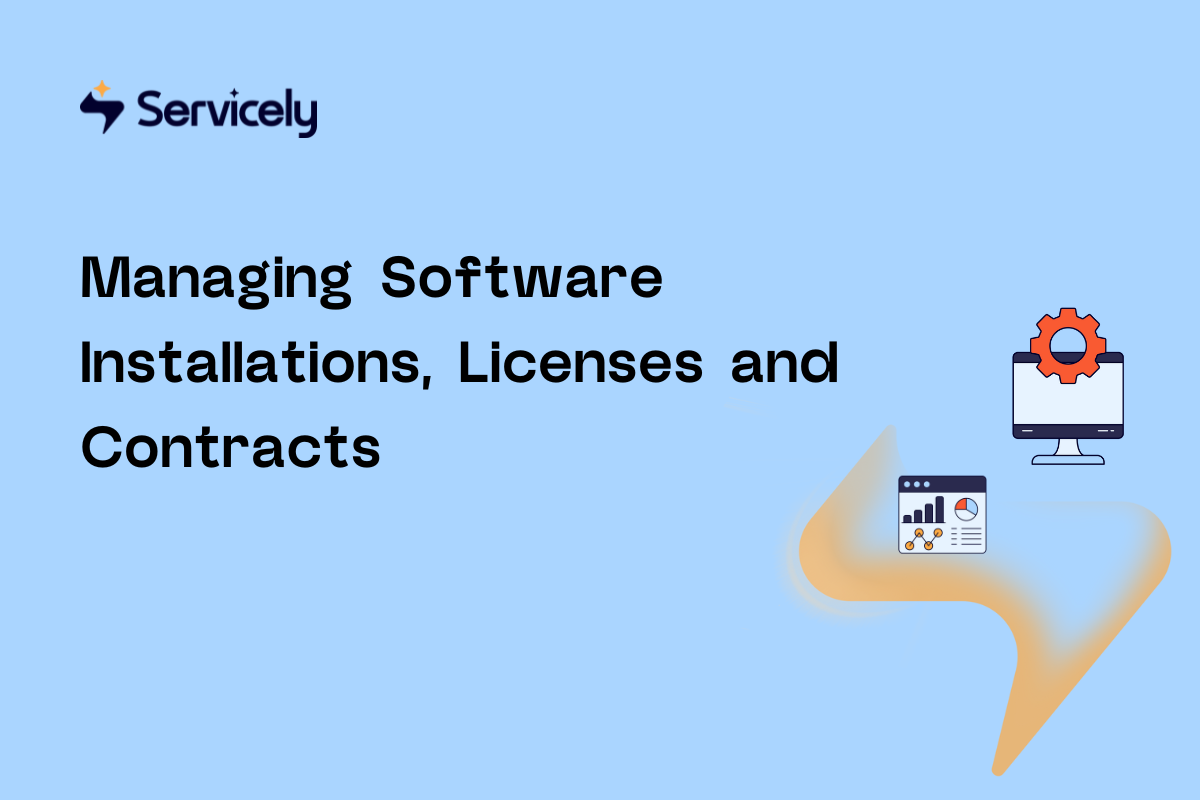
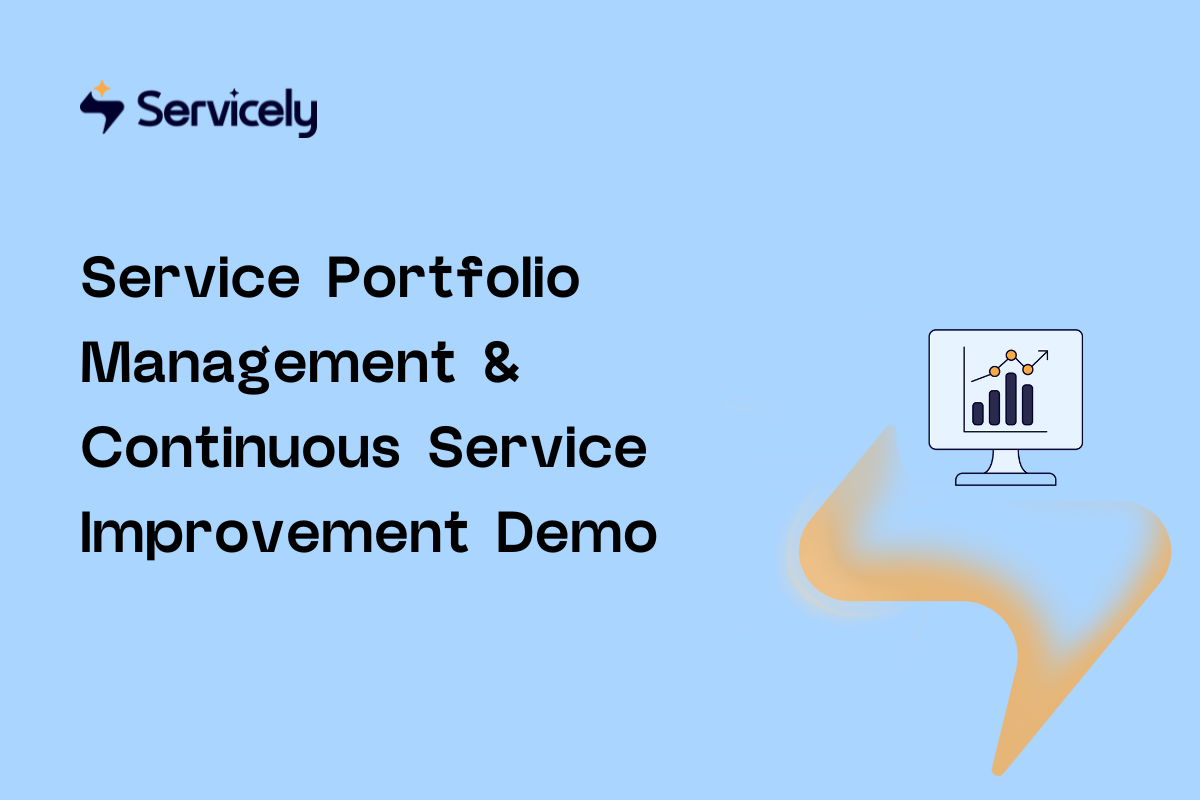
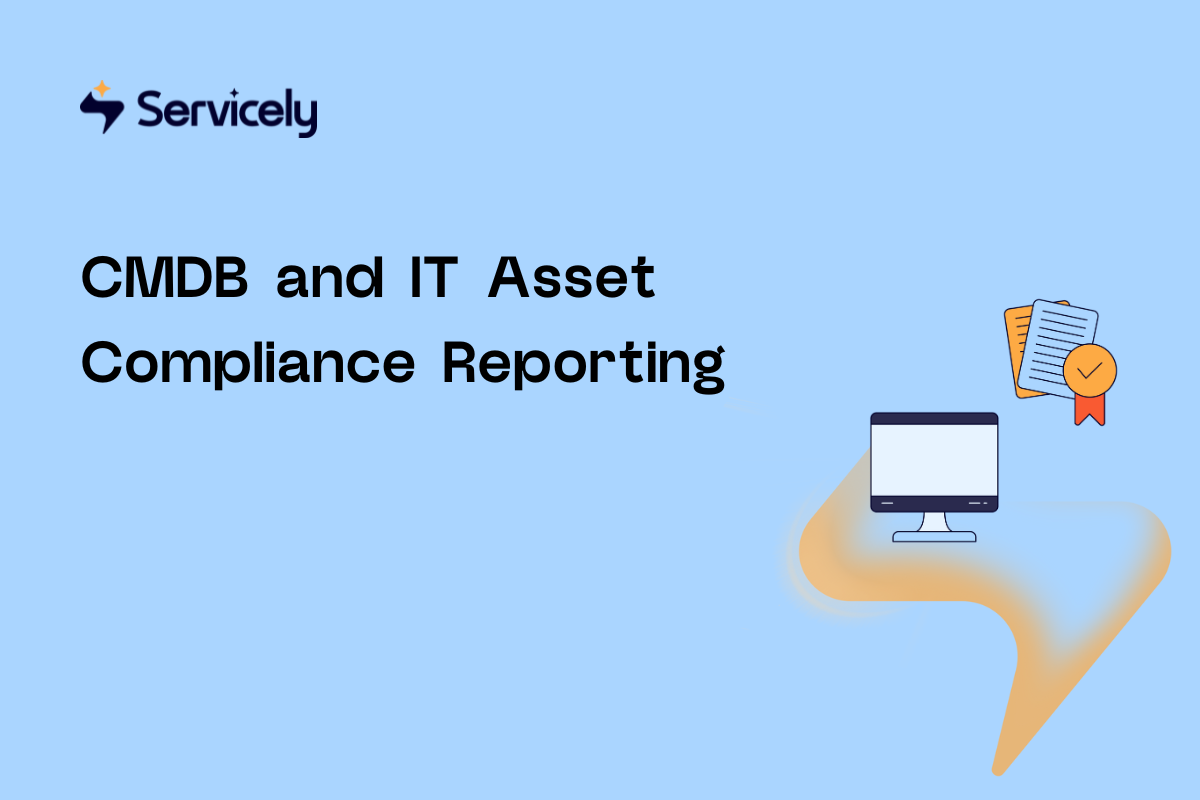
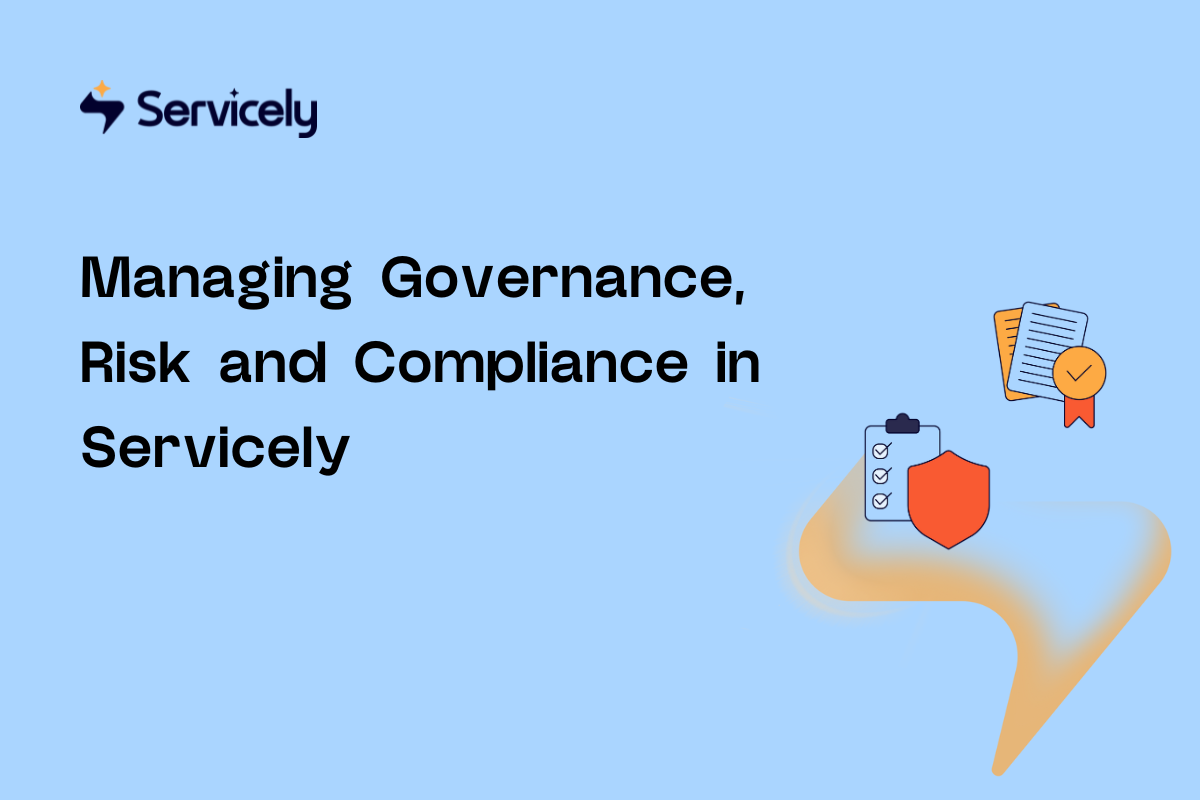
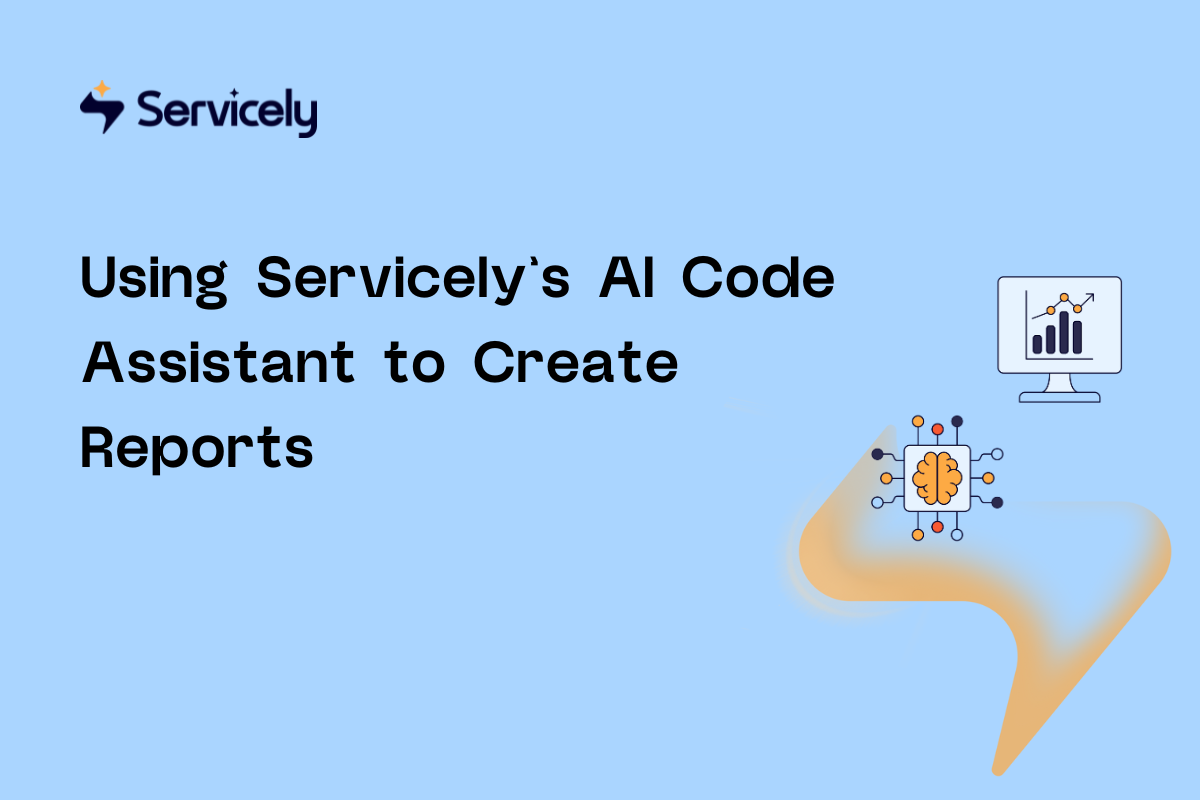

%20(1200%20x%20800%20px).png)



























